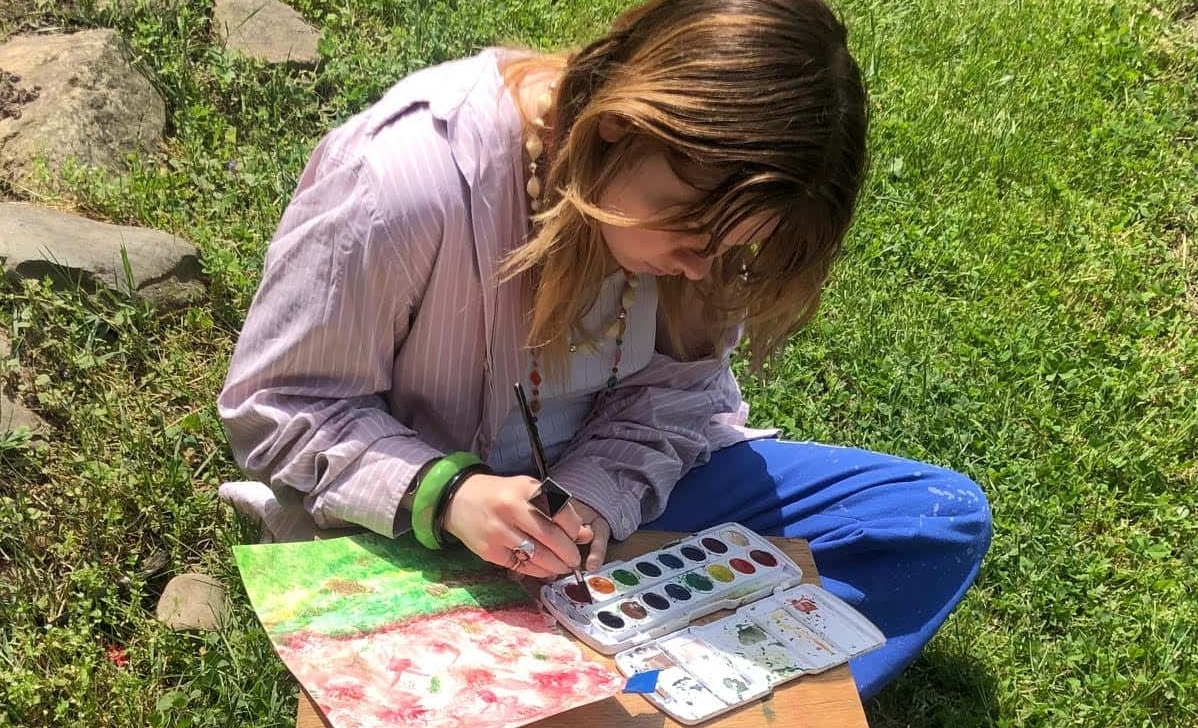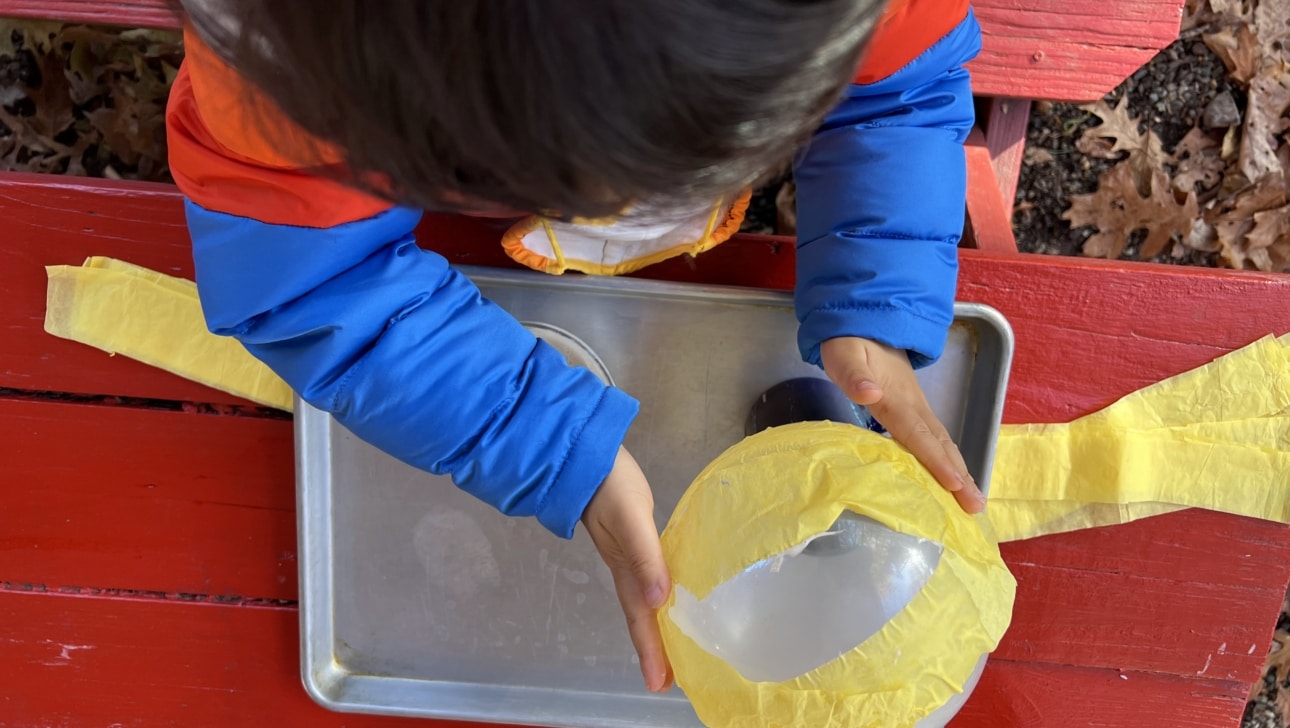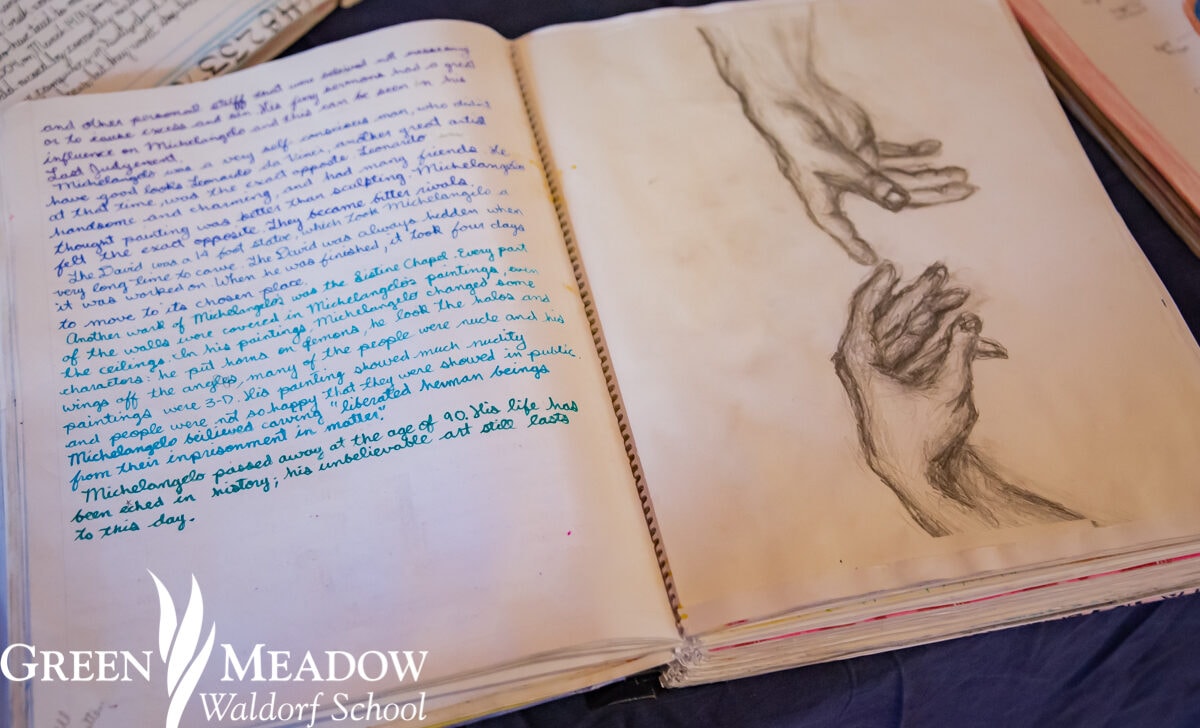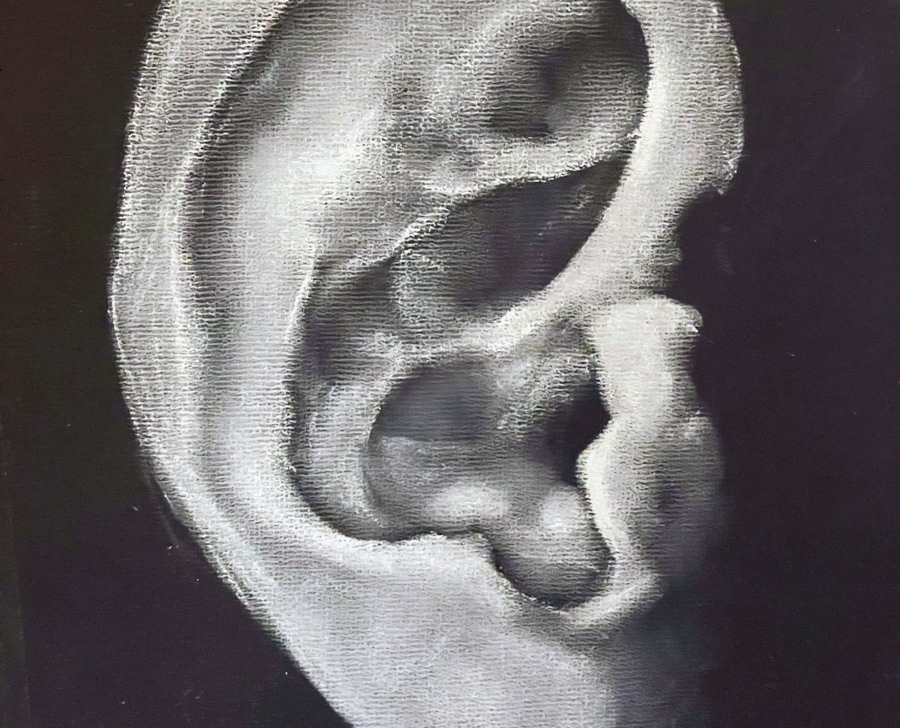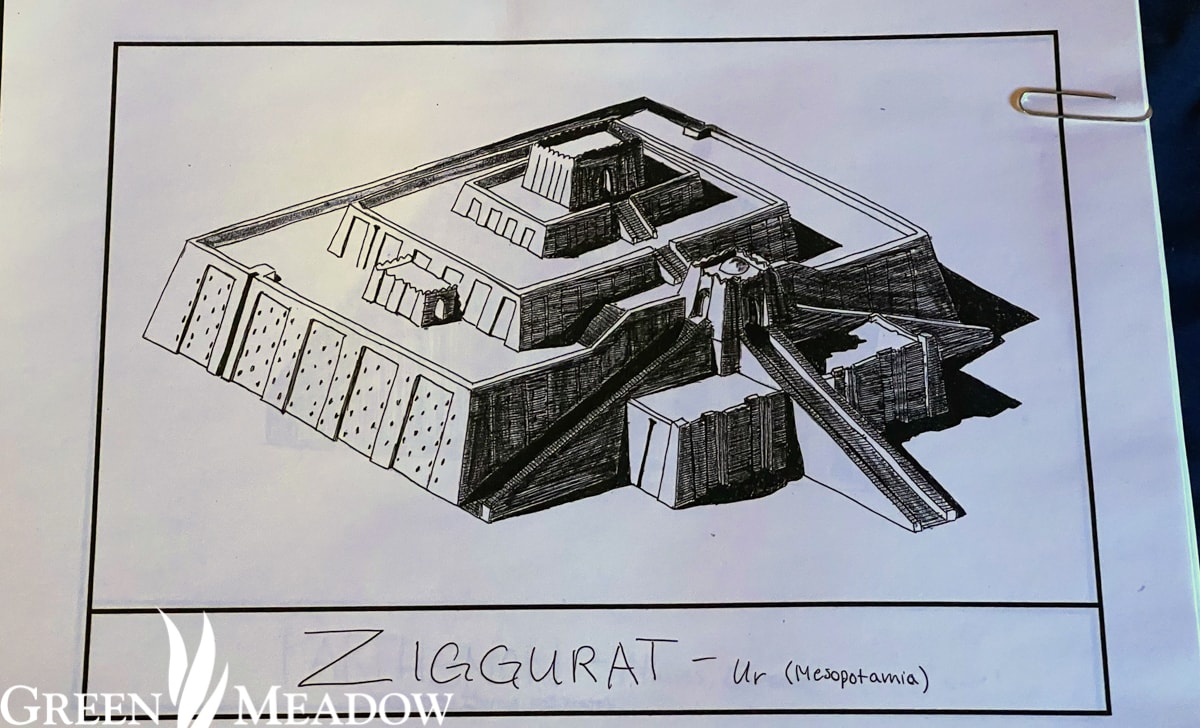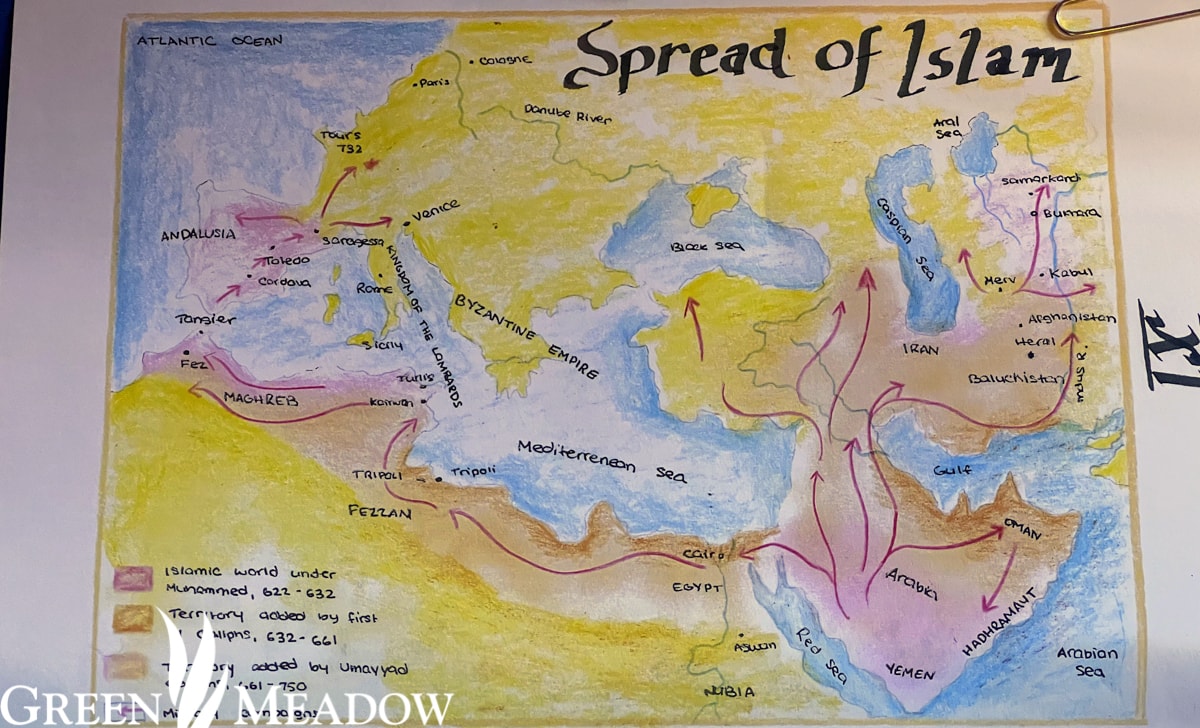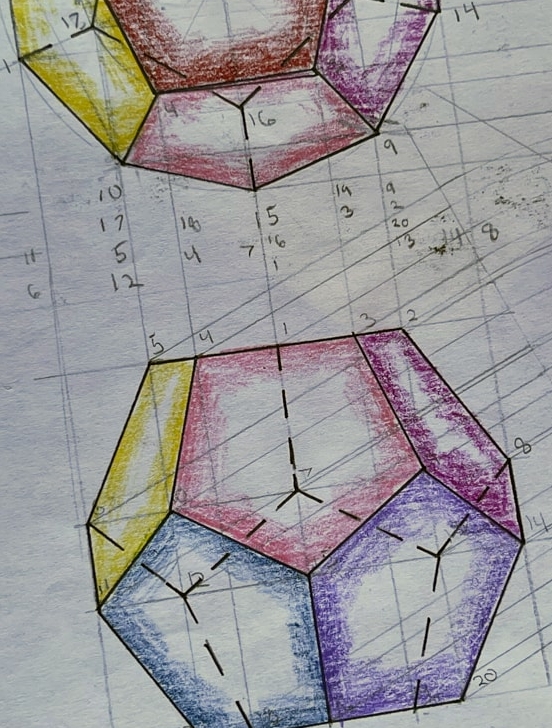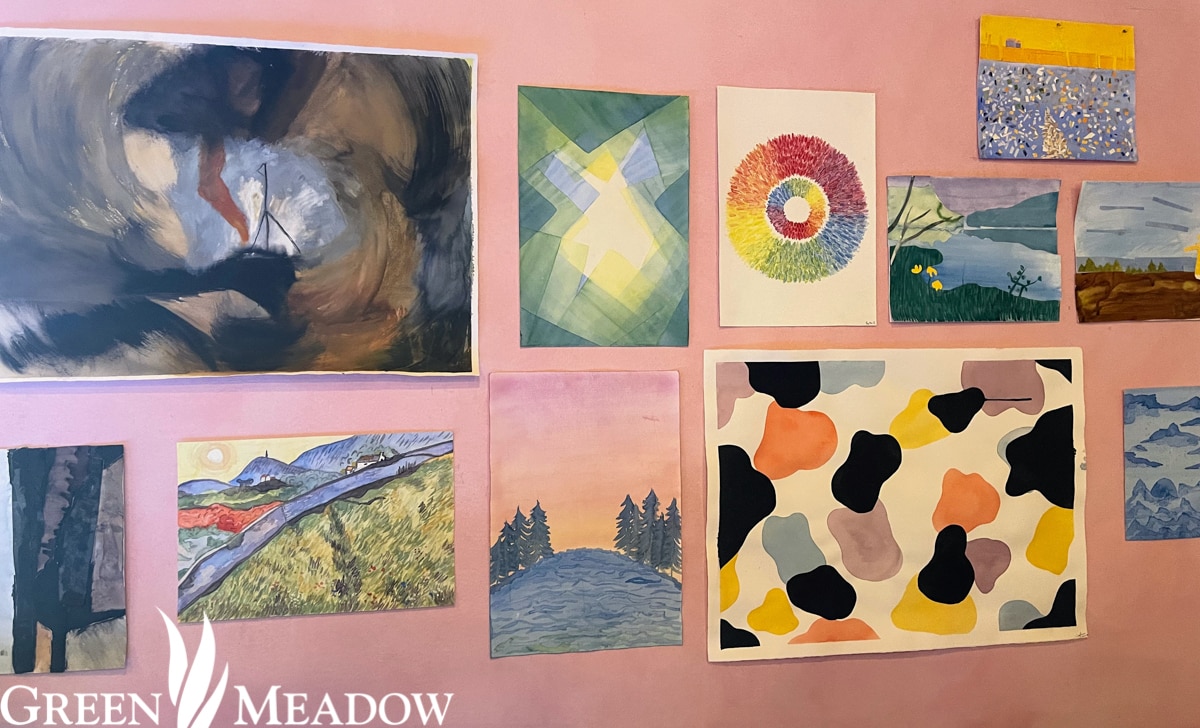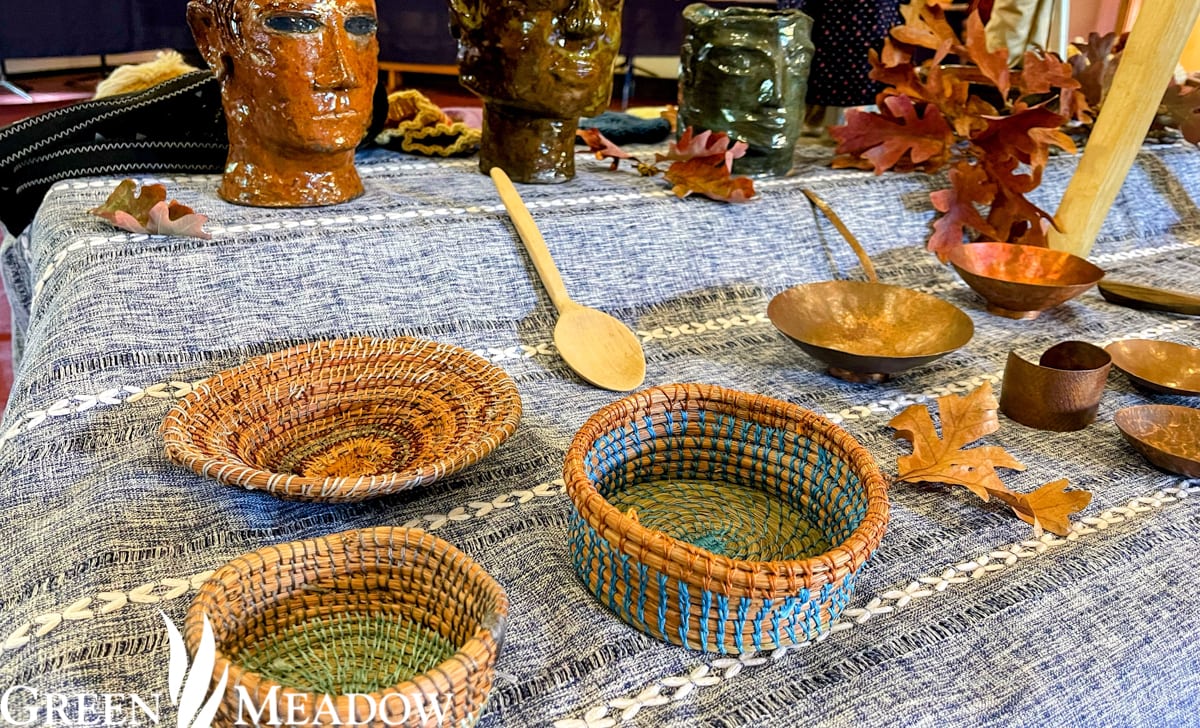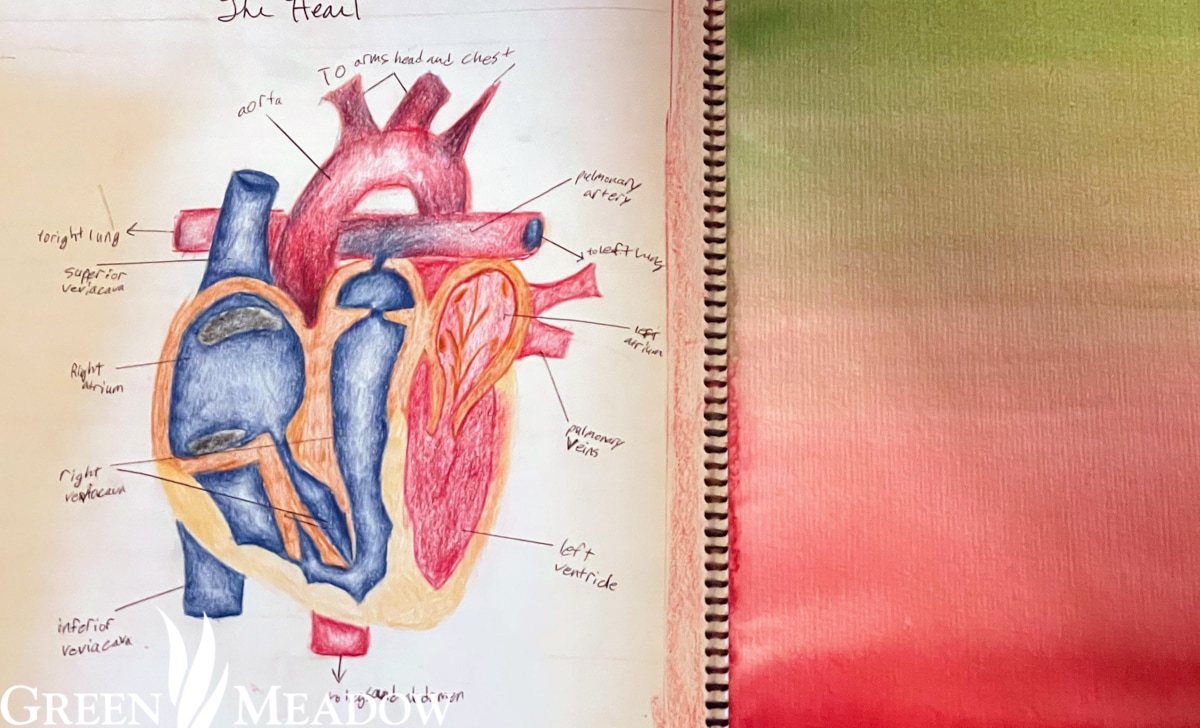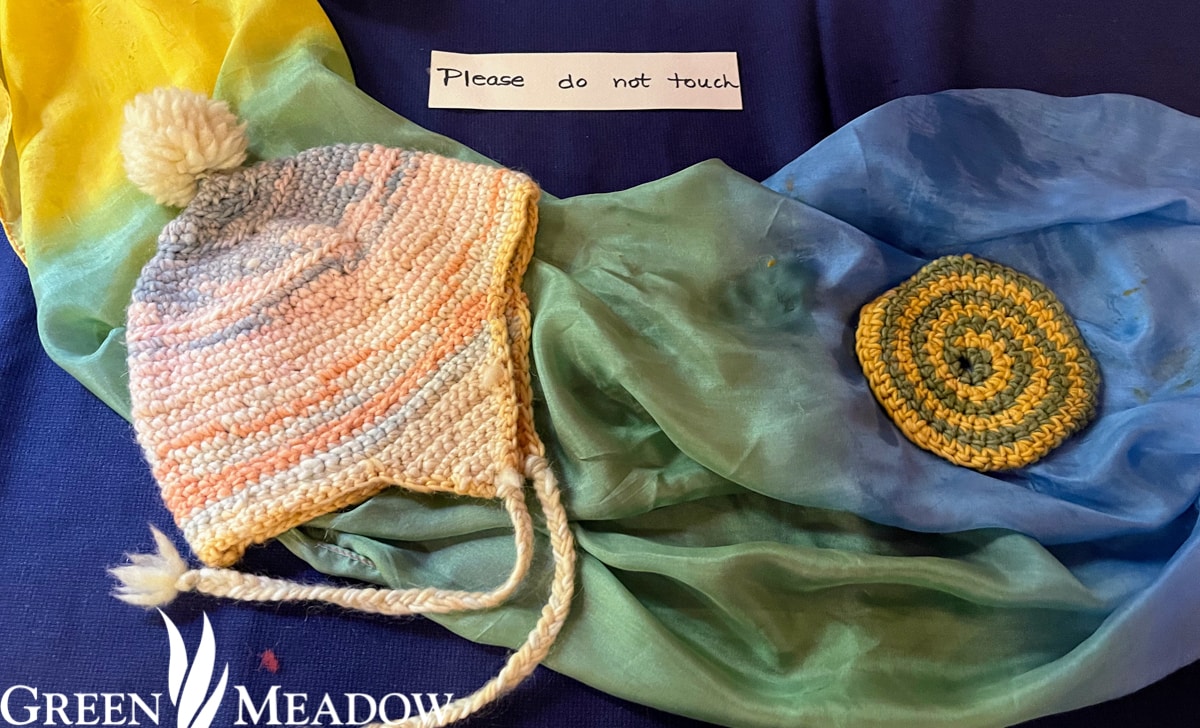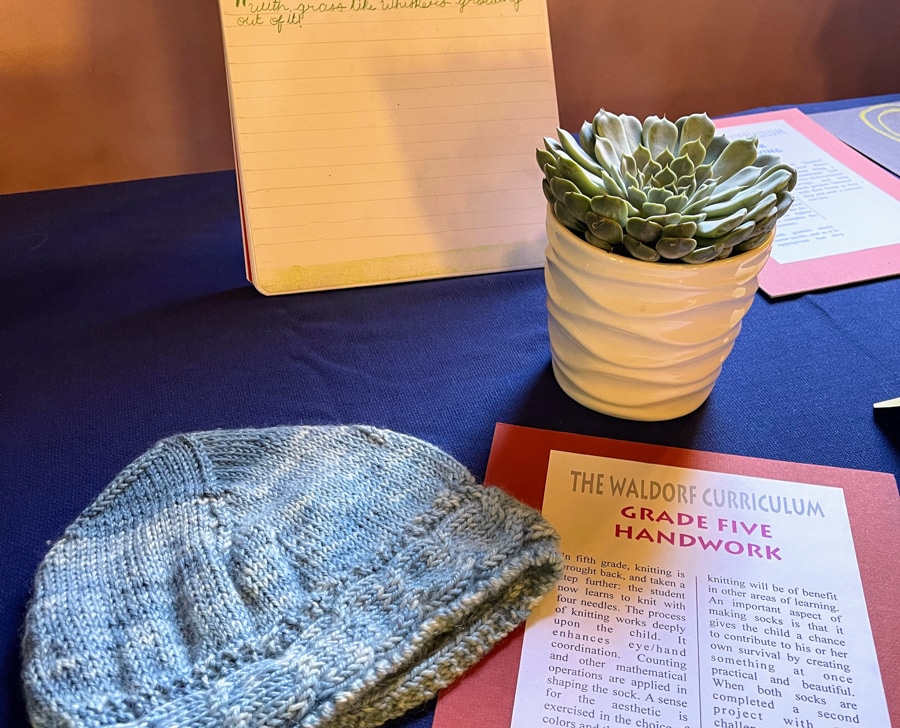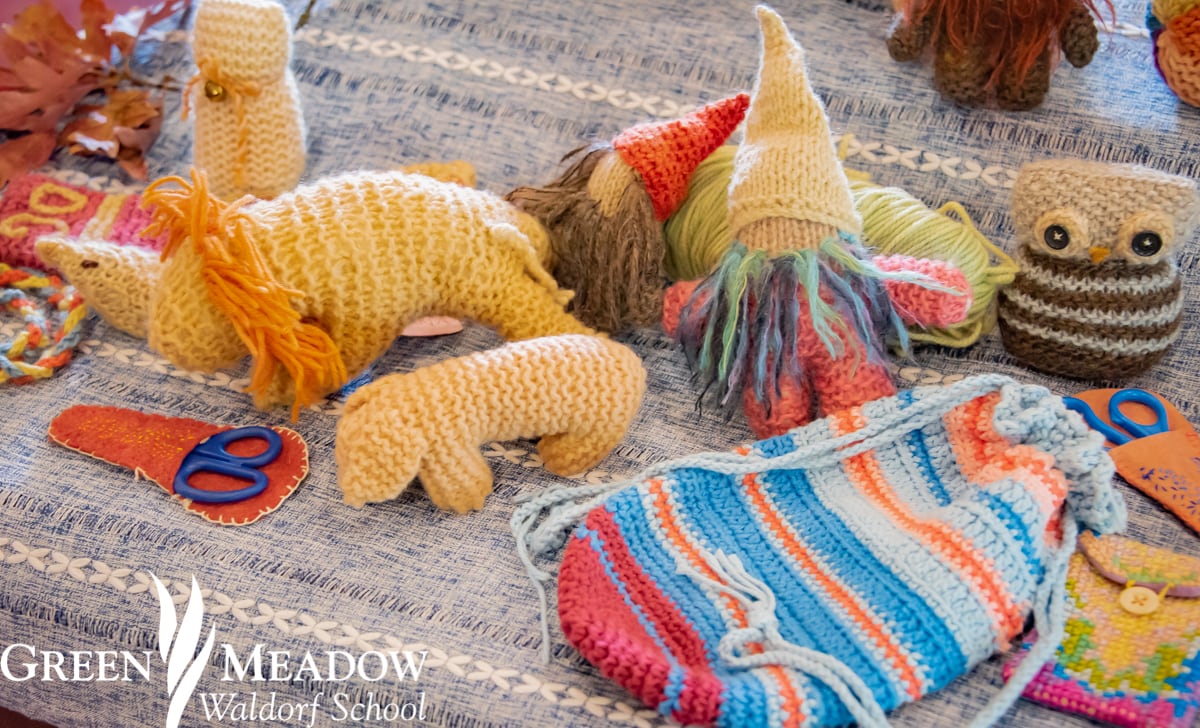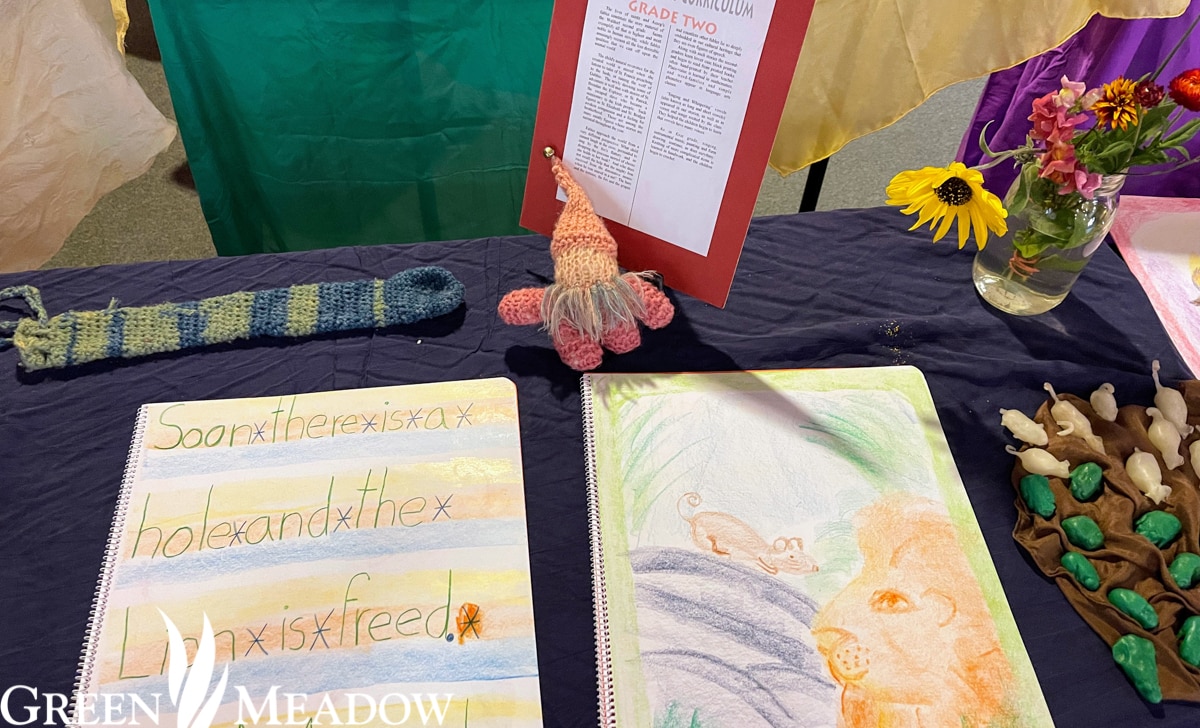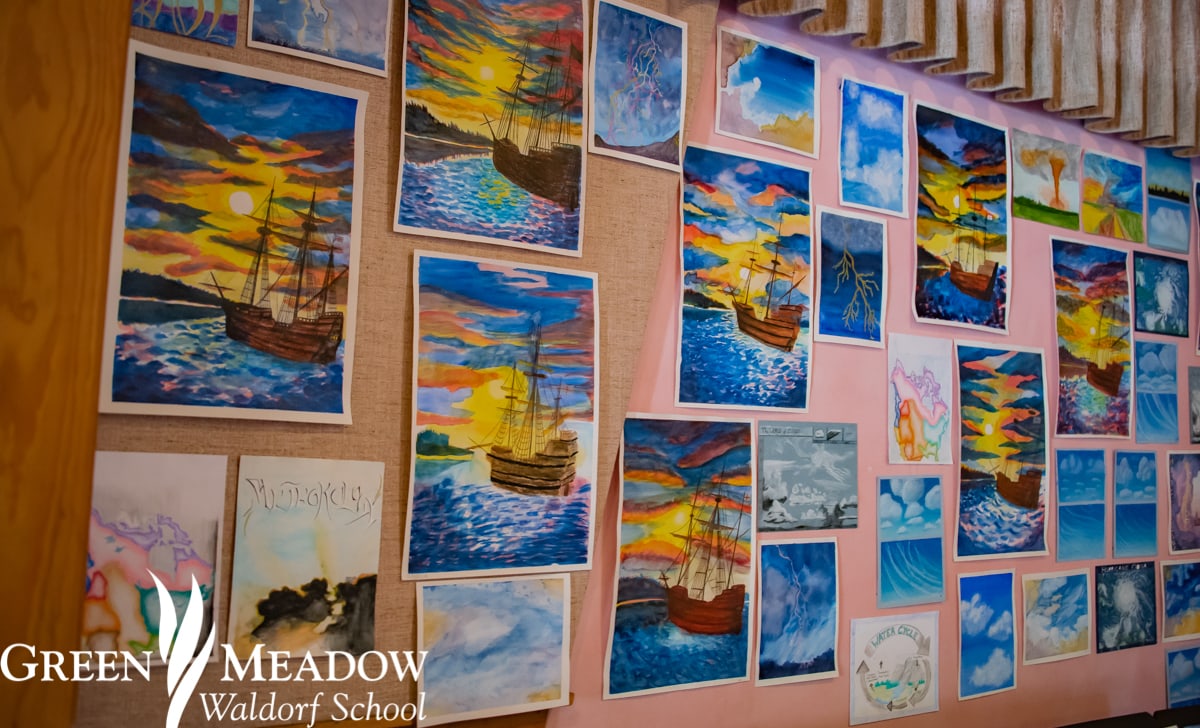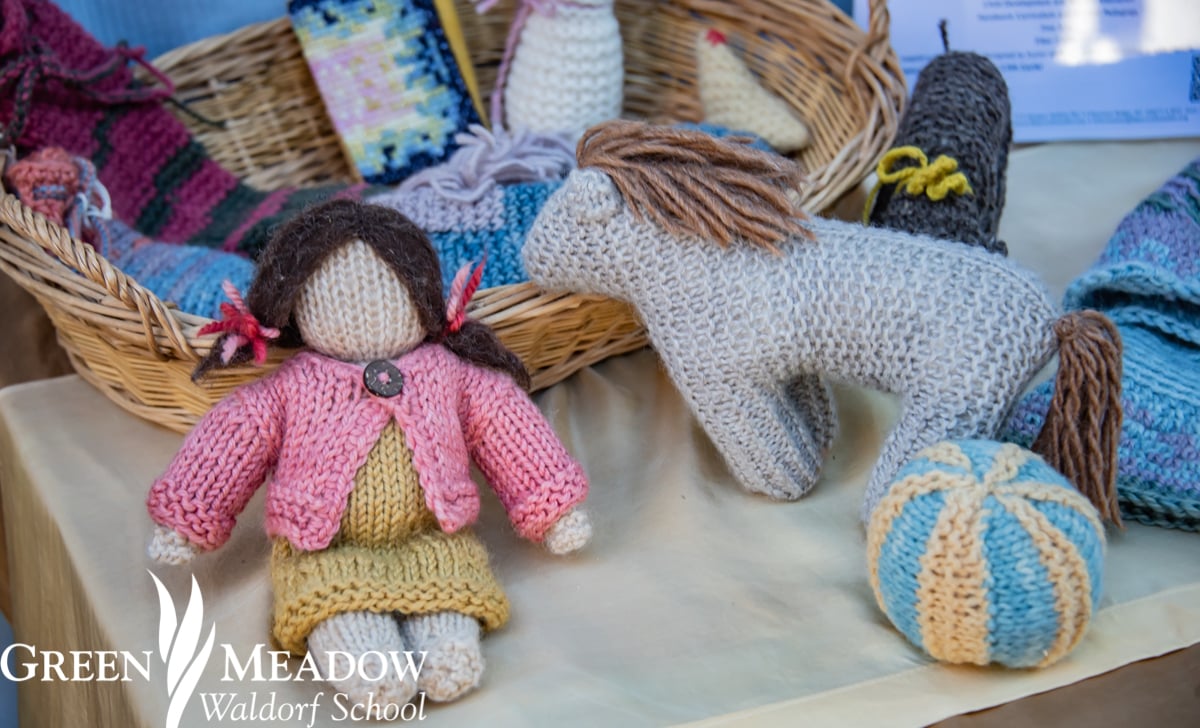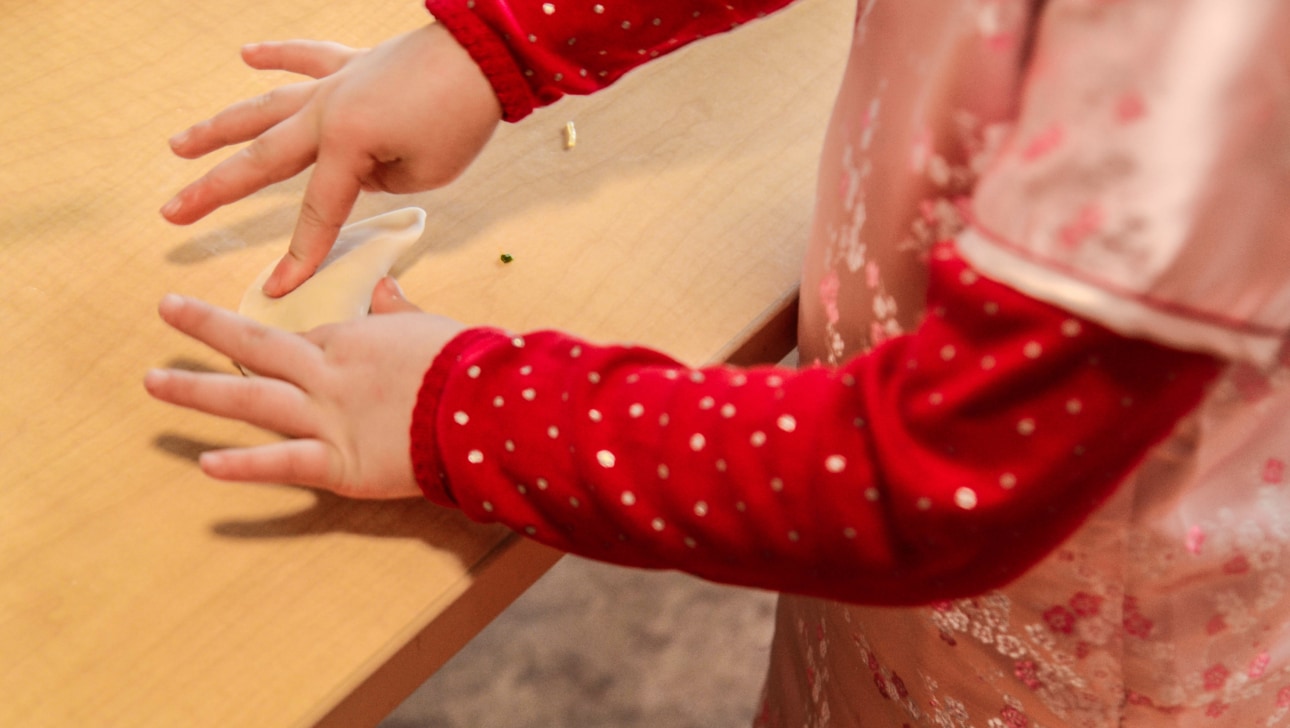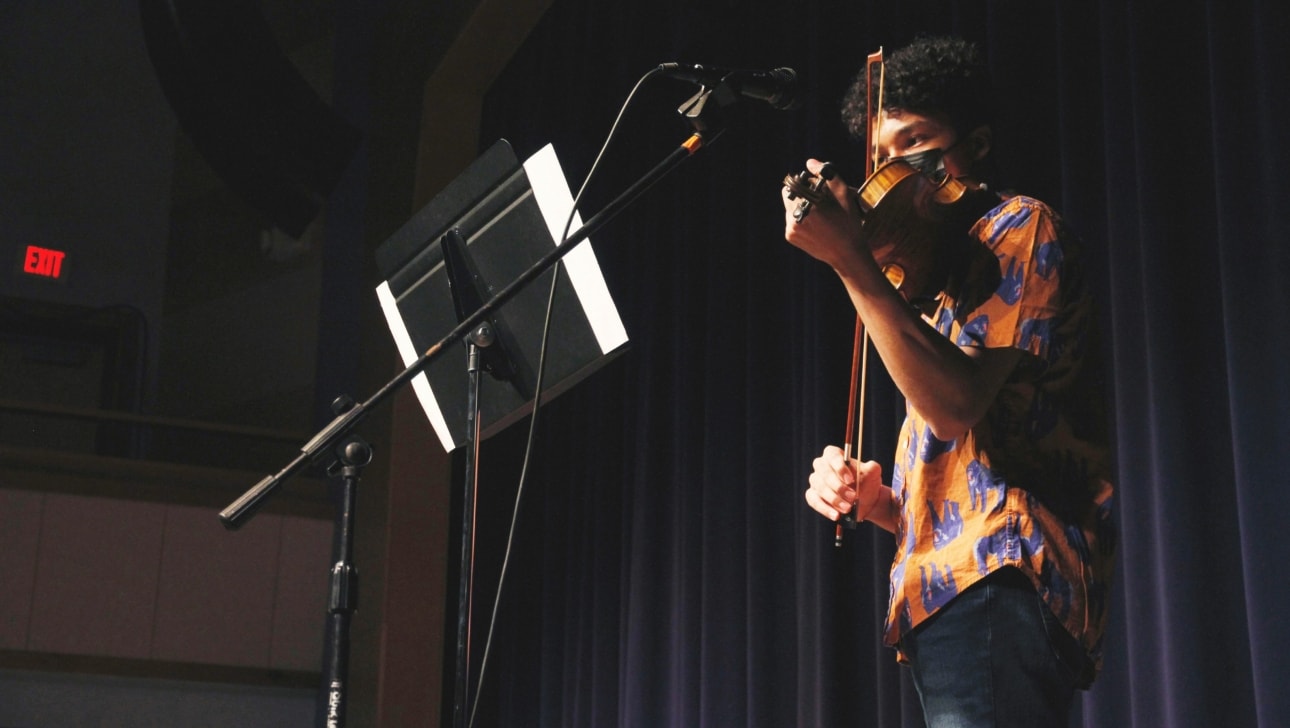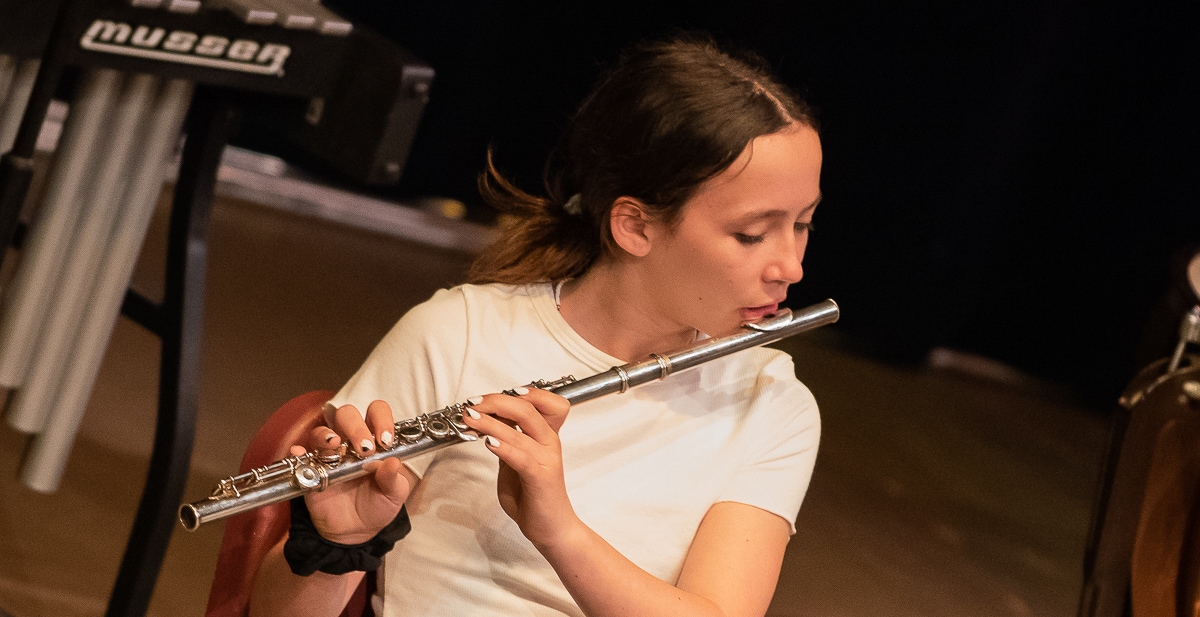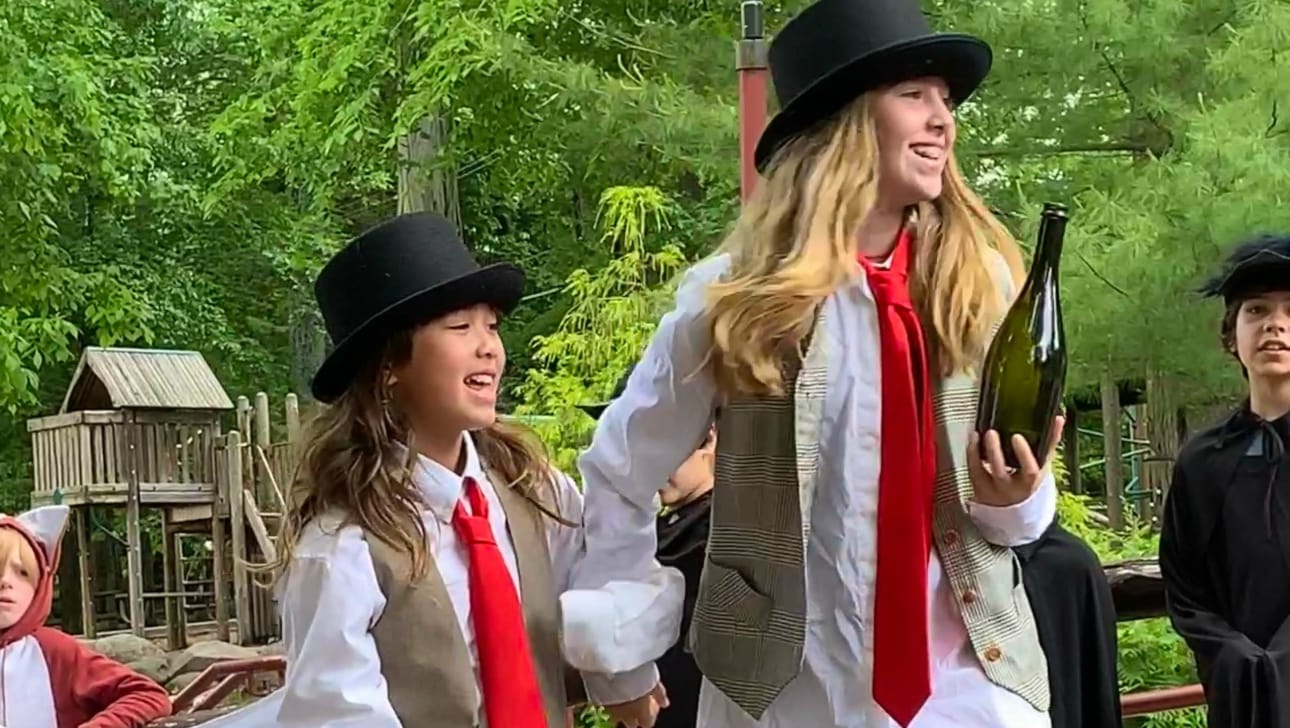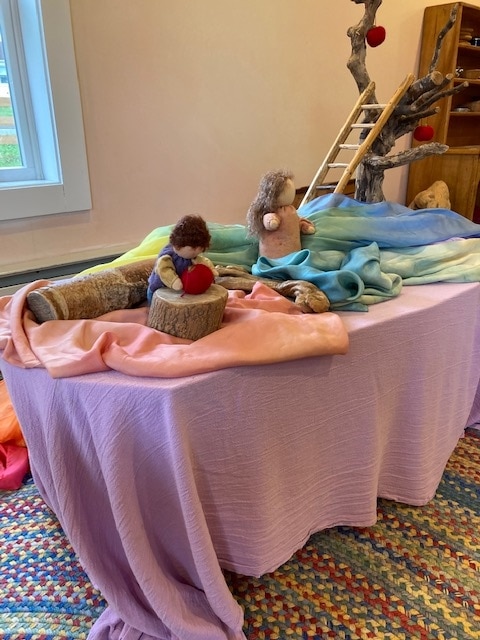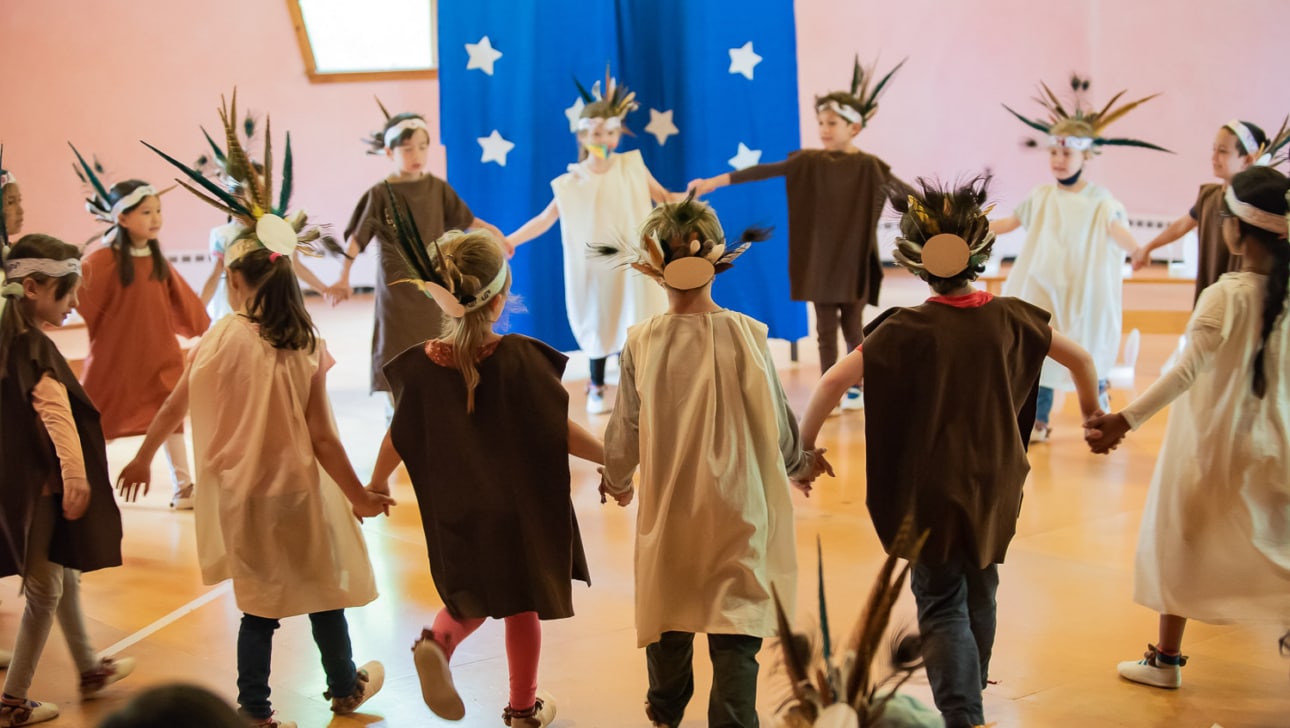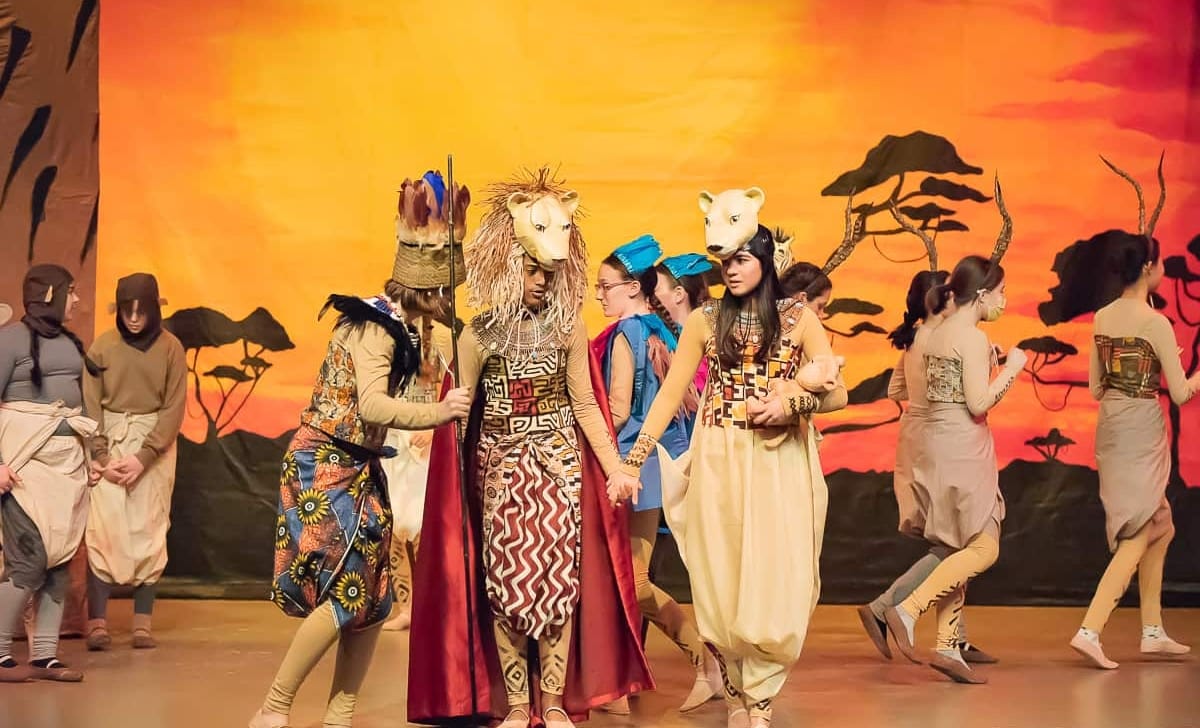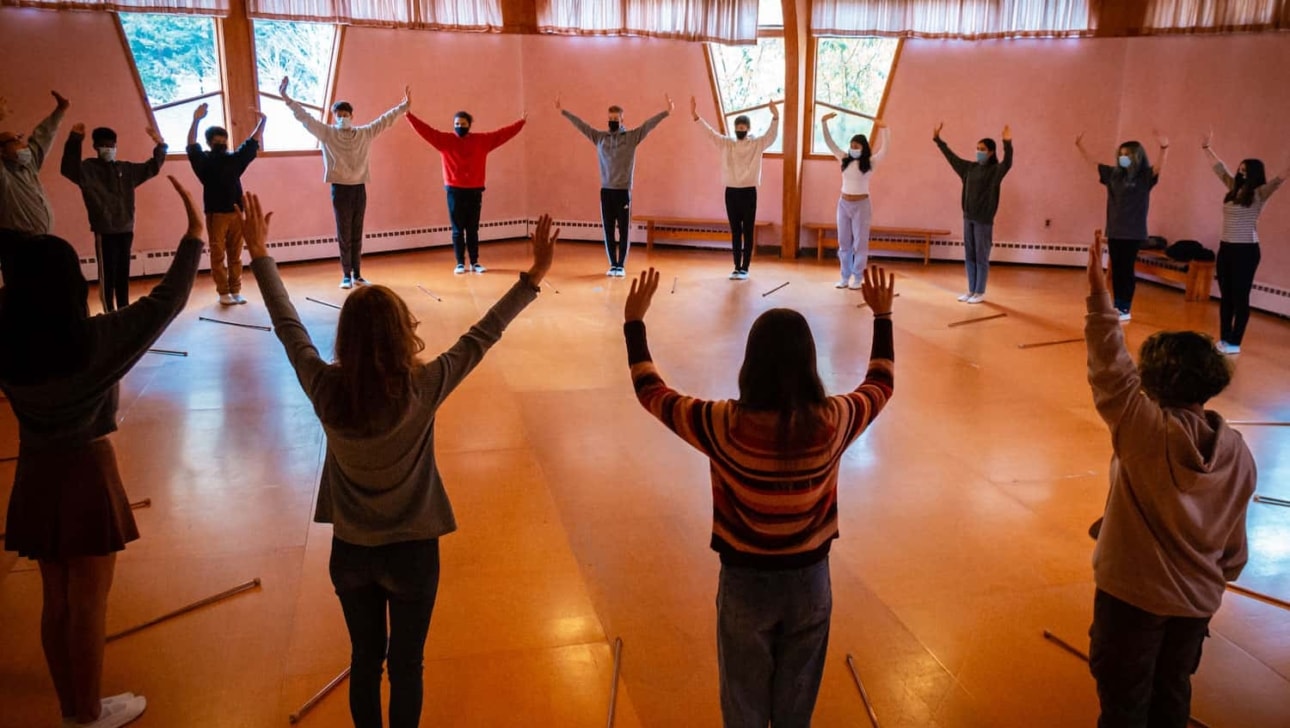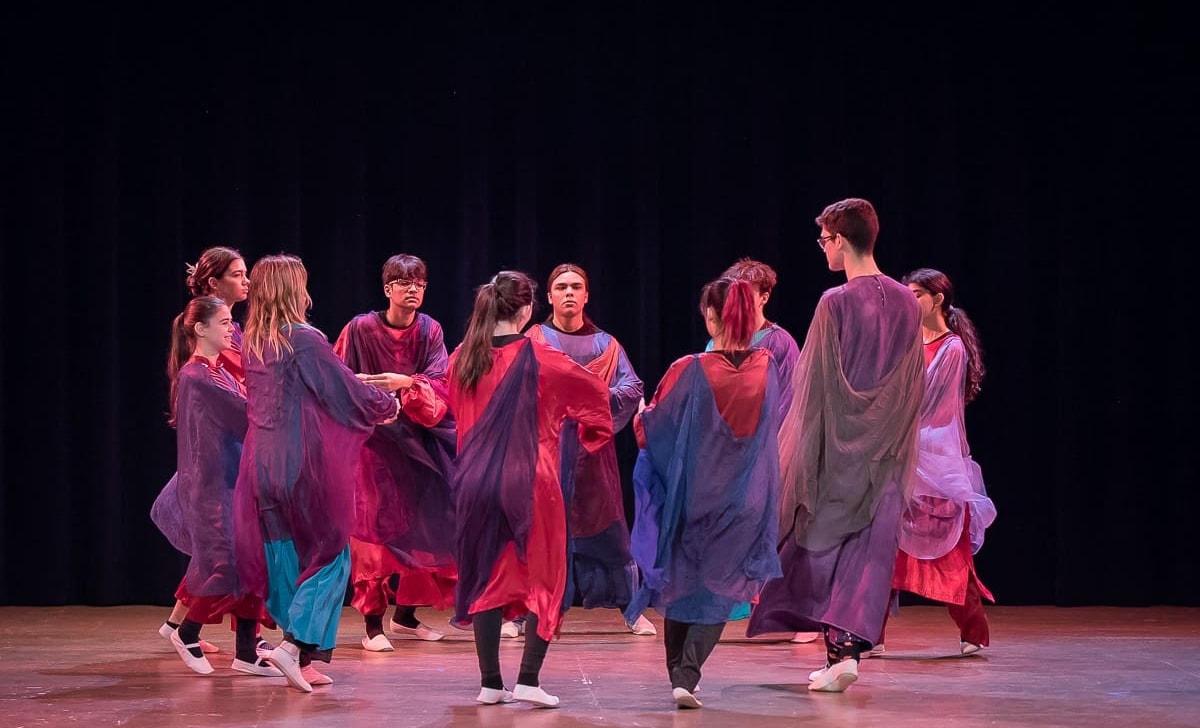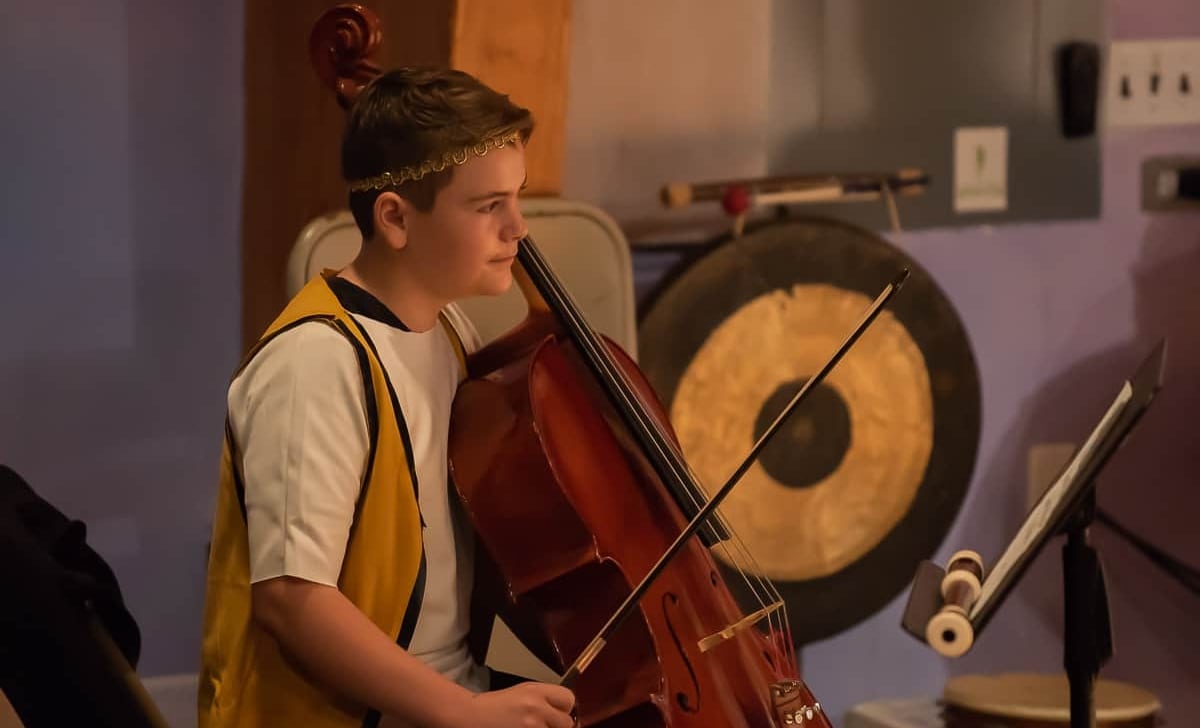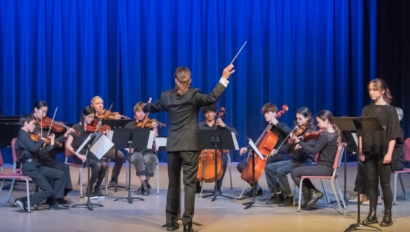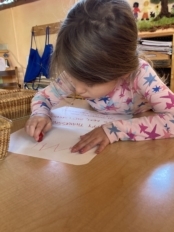Art is an integral part of Waldorf education. We have all seen the lovingly set up classrooms, the astounding chalkboard drawings, the masterfully painted walls and the beautiful pictures, paintings, songs, crafts, and plays Waldorf students create together. However, art in Waldorf education is much more than a subject in our curriculum.
In Waldorf schools, the academic curriculum is always taught artistically. Students learn to draw, paint, craft, sing and recite artistic pieces that are expressions of the topic at hand or which offer new perspectives and insights into a given subject. When studying the history of Africa, students may be found weaving baskets, drawing patterns, dancing and drumming African songs, and painting African landscapes. When learning about three dimensional geometry, students may create geometric lanterns in the shape of platonic solids. Reciting a poem about coal may be part of a block on geology, and music will be the pathway to studying acoustics as part of middle school physics.
Art, in all its forms, is inherently human. It offers healing, wholesome and balanced experiences to children when practiced daily, as is done at Green Meadow Waldorf School. The benefits of art in education extend far beyond the classroom or studio, and into all aspects of life.
Here are just 5 of the reasons why art is critical for a child’s development:
Art encourages creativity and self-expression: it offers students the possibility to express their individuality, to seek balance and harmony without, and in turn within.
Art develops critical thinking and problem solving skills: when drawing a portrait, knitting a hat, learning a piece of music, or carving a wooden spoon, students encounter unforeseen challenges to be addressed and solved creatively. They develop the capacity to observe carefully, to consider multiple perspectives and solutions, and to find innovative solutions in a practical manner.
Art fosters cultural awareness and appreciation: delving into the study of a culture through art, and practicing different artistic expressions from around the world, helps students develop a deeper understanding for other cultures and their values, as well as a sincere appreciation of the diversity of different societies.
Art enhances cognitive development: artistic expression requires sustained attention, keen observation, and true dexterity, thus improving visual and auditory perception, spatial awareness, executive function, and fine motor skills.
Art improves well-being: the therapeutic benefits of art are widely known. The daily practice of art is a form of prevention, strengthening a person’s resilience in a systematic way. Practicing art as part of a community fosters a sense of camaraderie and belonging, resulting in increased confidence.
To learn more about our curriculum and the role of art at Green Meadow Waldorf School, we invite you to explore our website!
